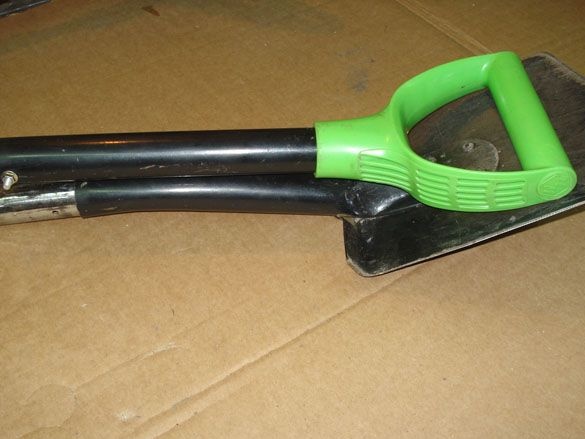
In connection with the new laws on treasure hunting, a simple sapper shovel was almost equated with a Kalashnikov assault rifle and a fishing trip with a shovel for digging worms can result in a bad story and a fine of 1000-1500 rubles. Therefore, I propose to make a folding shovel so that it can completely hide in a backpack, bag and not call anyone's eyes.
Point 1. For the manufacture we need:
• Metal sapper shovel made of spring steel.
• Welding machine.
• A length of pipe equal to the inside diameter of the handle of the shovel (usually the back of an old metal bed is suitable).
• Small grinder with a thin cutting disc, petal-emery wheel.
• Drill, drill D = 5 mm., M4 bolt 35 mm long., Wing nut.
• File, two clamps.
• Roulette, vernier caliper.
Item 2. Production.
As a basis, take a sapper shovel with a hollow metal handle, it is made of spring steel, so the safety margin in its thin-walled handle is very good.
That's just the bayonet dimensions of this blade are too large and can not withstand digging to the entire depth of the bayonet, it constantly bends in the opposite direction, then shoots back, but the field of continuous operation still breaks in this place. Therefore, the bayonet must be immediately reduced to the size of the right sapper blade.
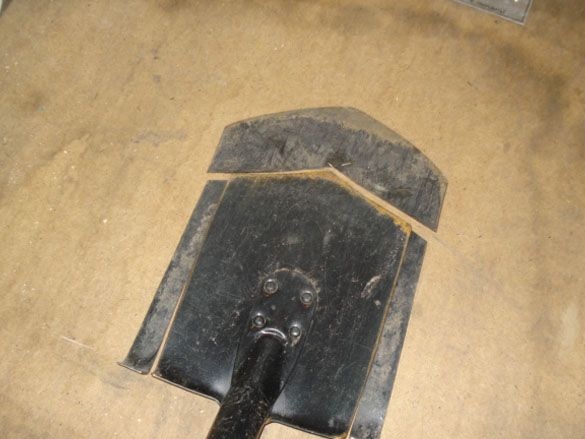
We draw the cut lines, from the sides you need to retreat about 20 mm, and the bottom 40 mm. We cut off all unnecessary grinder.
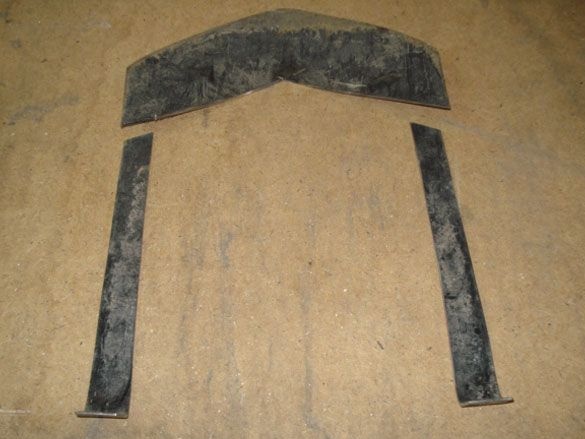
If desired, a crossbow pistol can be made from the trimmed ones, the steel is spring, so I put it off for later.
Sharpen the bayonet as it was before.
Now we find the middle of the shovel and retreat towards the bayonet by 50-80 mm., Put a mark.
For the convenience of further work, it is advisable to remove the plastic handle-holder. To do this, unscrew the fixing screw, step on the bayonet with your foot and twisting alternately in different directions by the handle, remove it.
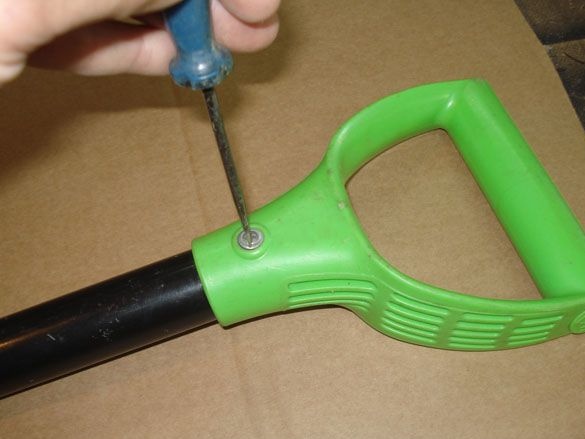
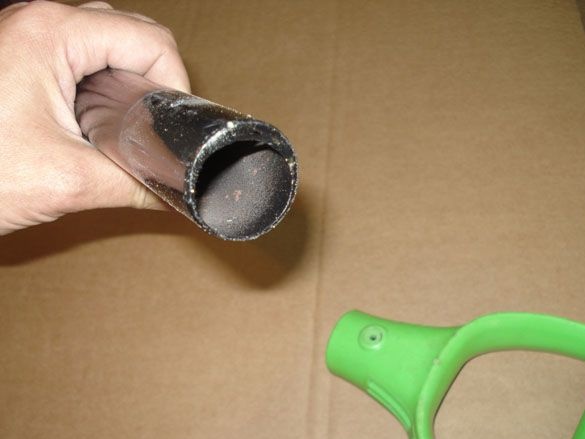
In the marked place, we grind the shovel into two parts with a grinder. As a result, the handle should be longer by these 5-8 cm.
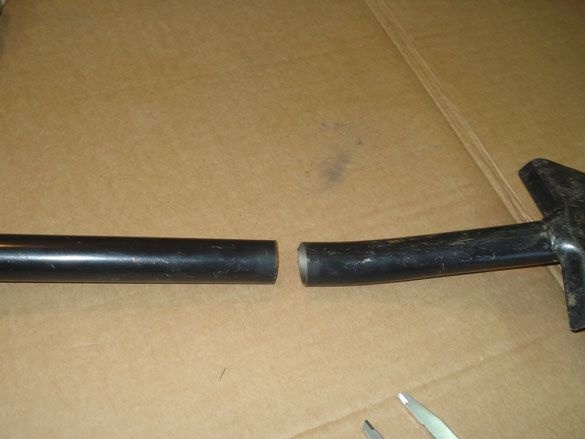
We measure with the caliper the inner diameter of the handle pipe, it turned out to be approximately D = 30 mm.
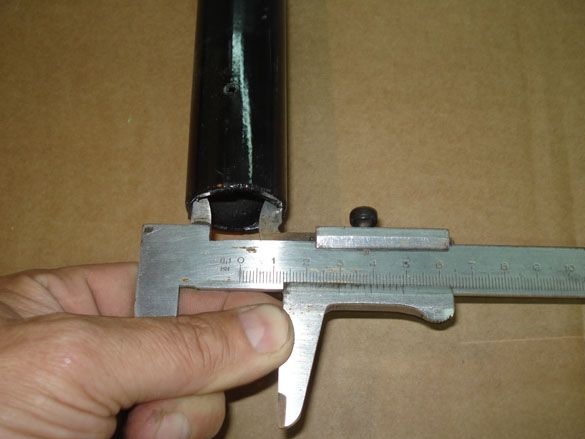
We select a pipe for the connecting insert, for this purpose a pipe from the back of an old metal bed is well suited.
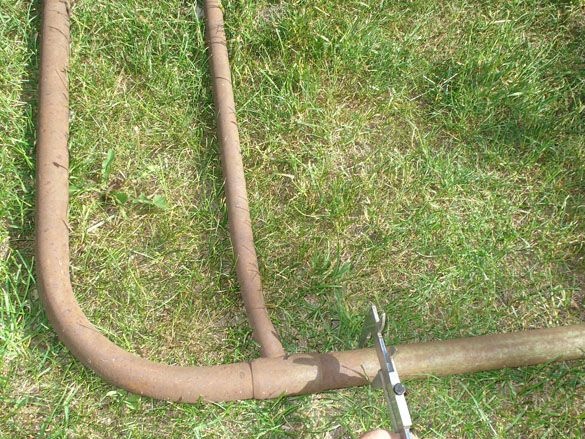
We saw off 100 mm. piece of pipe, it is desirable to take the edge, it has a narrowing rolling.
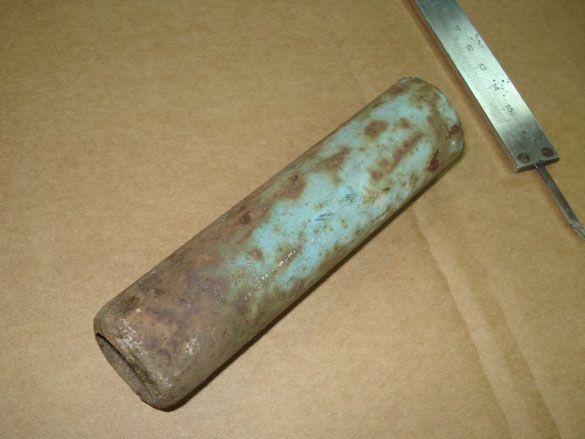
File internal sharp edges, burrs.
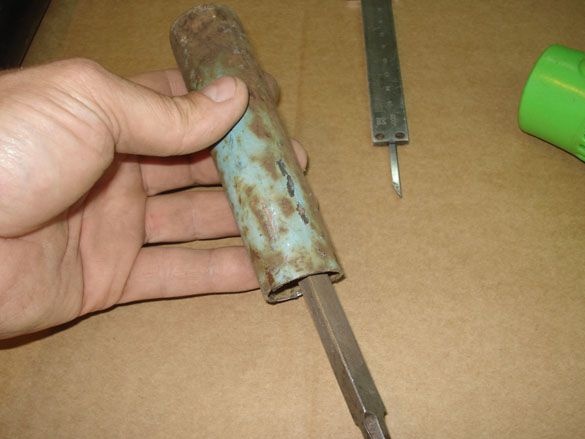
We erase the surface with an emery circle, for one slightly reduce the diameter and remove the chamfer along the edge.
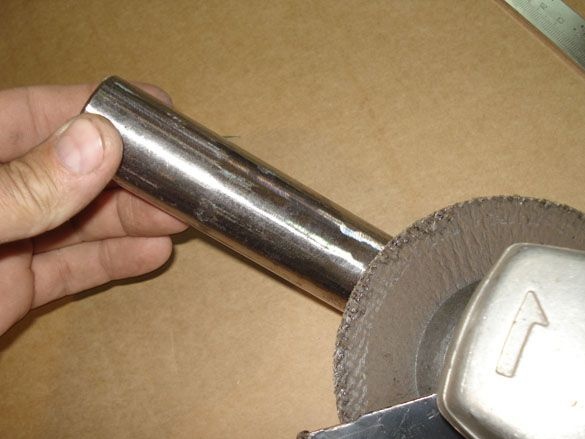
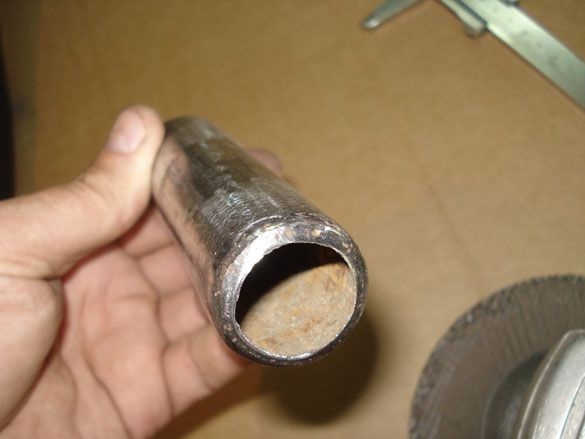
In the bayonet, in the pipe, we cut 50 mm., With a thin cutting disc, this will make it possible to insert an insert into the pipe.
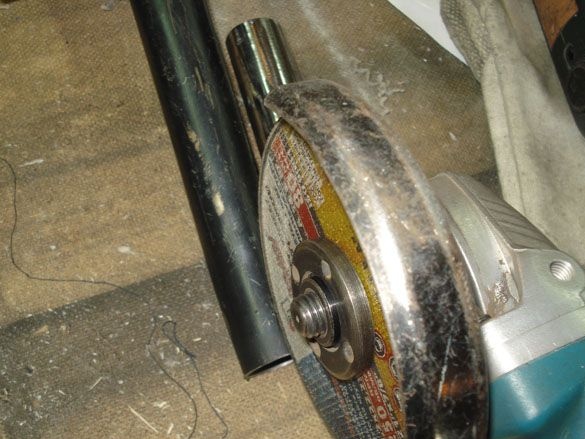
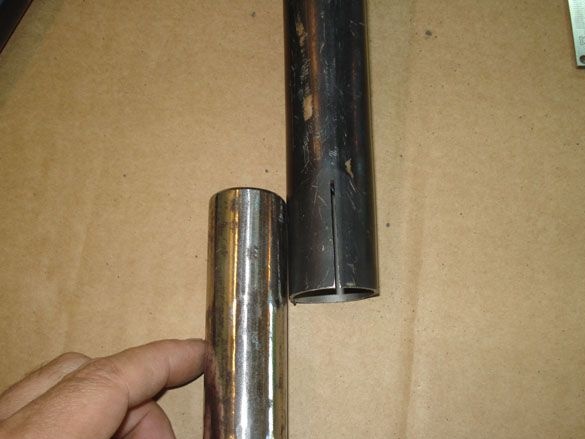
We expand the incision with the wedge of a screwdriver and insert the pipe with the non-rolled side inward.

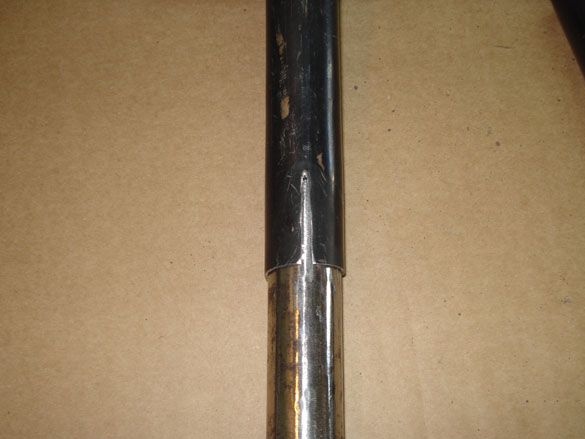
We hammer the pipe and the end of the cut, use a stick, not a hammer, so as not to bend the edge of the insert.
In the second tube of the handle we make a cut in the form of a letter (T), the length of the cut is equal to the length of the non-clogged part of the insert.
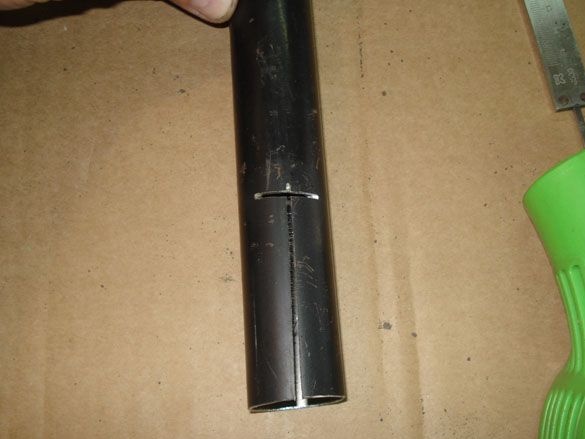
We check how everything is connected, if necessary, modify the docking station.
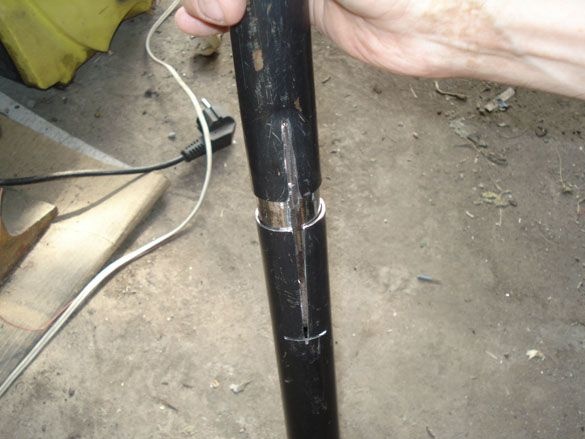
We process sharp edges with a file.
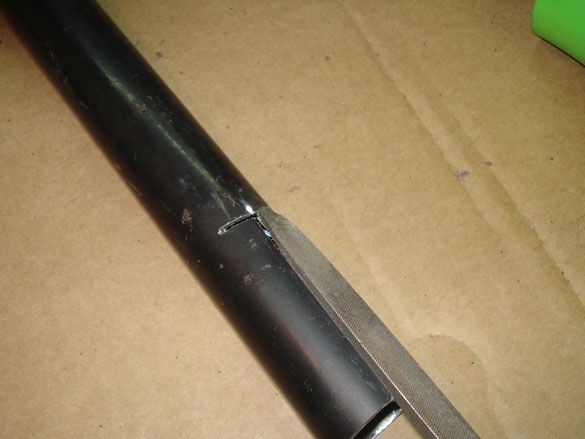
To fix and evade, the insert in the bayonet must be welded.
For tight crimping of the pipe we use clamps.
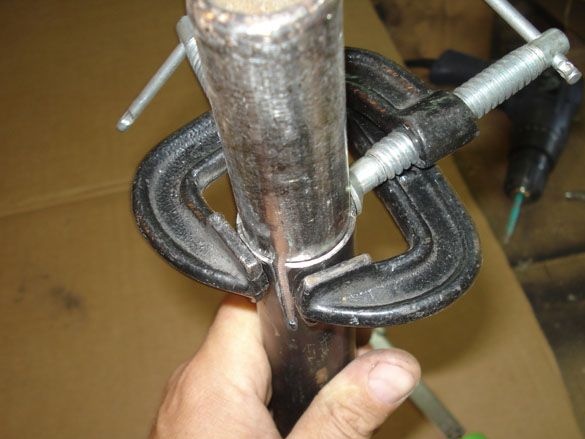
We put several welding points, no longer necessary.
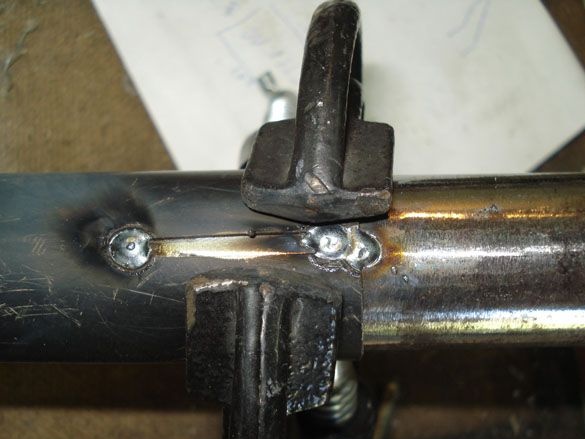
Remove the fasteners and grind if necessary with a grinder.
We connect the shovel to the working position.
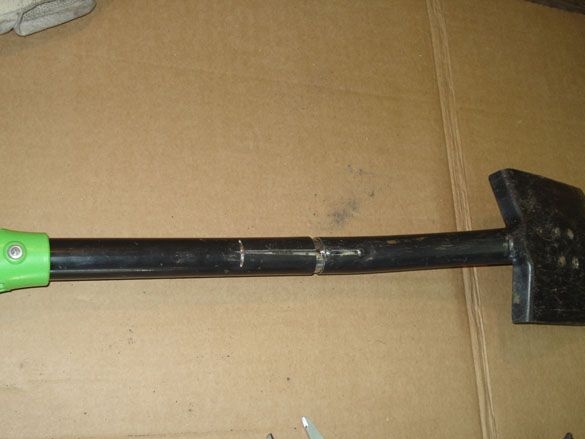
For fastening and giving additional rigidity during operation, you need a bolt lock. We drill a hole D = 5 mm. under the clamping bolt.
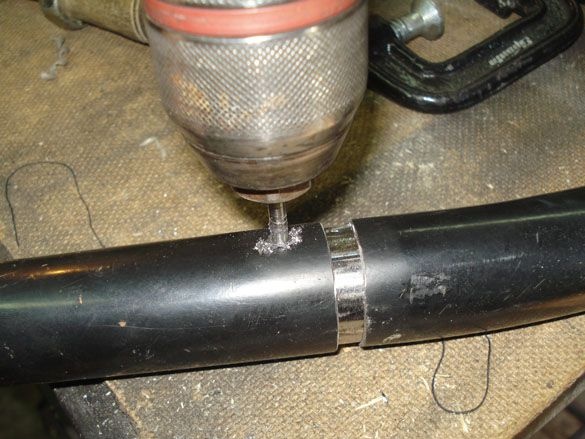
We select a suitable bolt; instead of a nut, it is advisable to use a wing nut.
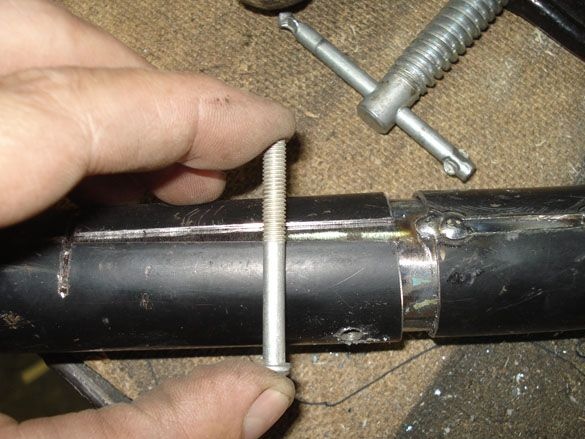
An installed bolt with a nut will not allow the handle to expand on the cut and protect it from breakage on heavy soil.
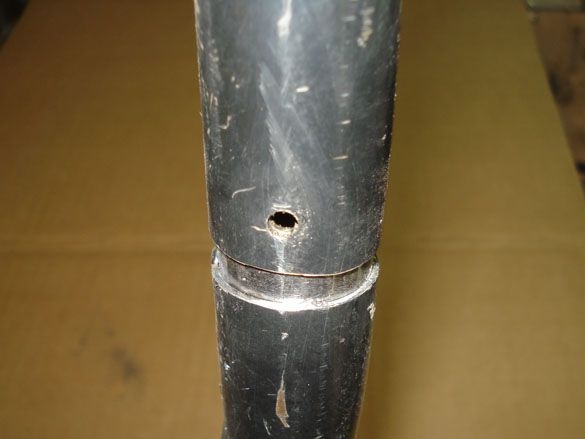
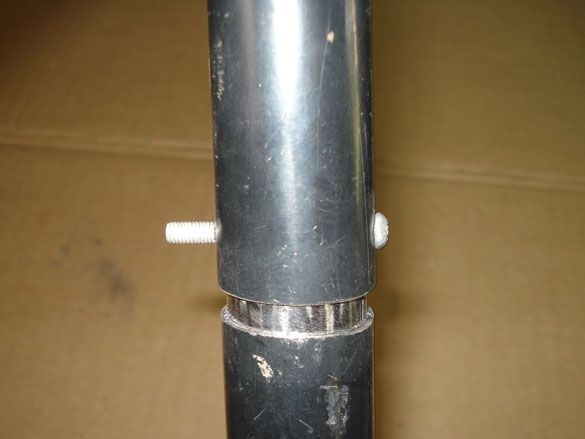
Point 3. Conclusion.
Now, in the disassembled state, the shovel takes up very little space and fits perfectly in a backpack, scooter trunk or under the seat car. For complete convenience, you need to sew a cover from a dense tarpaulin.
